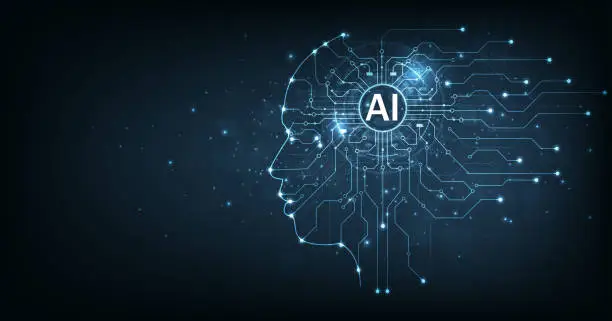The digital landscape is exploding with Artificial Intelligence (AI). AI is revolutionizing everything from facial recognition software to self-driving cars. But with great power comes great responsibility. Penetration testing, the process of simulating an attack to identify vulnerabilities, is crucial for traditional systems. But what about AI? Artificial intelligence penetration testing is the new frontier of cybersecurity, ensuring our AI-powered future is secure and trustworthy.
Table of Contents
Definition of Penetration testing
Penetration testing isn’t exactly new. It’s a time-tested method for identifying weaknesses in computer systems. Imagine a security expert playing the role of a malicious hacker, probing for vulnerabilities. Penetration testing exposes these chinks in the armor before real attackers exploit them.
AI in Penetration testing

Now, fasten your seatbelts because we’re entering new territory. Artificial intelligence (AI) is transforming everything around us. AI systems are making real-world decisions, and security breaches in AI can have serious consequences. That’s where Artificial Intelligence Penetration Testing comes in. It’s about applying these penetration testing principles to the specific vulnerabilities of AI systems.
Secondly, AI itself can be used for augmenting the process of penetration testing. Imagine a trained AI bot trying to implement some of the processes of penetration testing on computer systems, or helping analyze data emerging from such tests. Sounds fancy, doesn’t it? But it’s a fast emerging reality of today. It goes without saying that the AI system being used is itself tested thoroughly using penetration testing and has passed all set benchmarks of security.
Why Artificial Intelligence Penetration Testing is Critical
For decades, penetration testing has been the guardian at the gate, safeguarding traditional systems from cyberattacks. But the digital landscape is evolving at breakneck speed. Artificial intelligence (AI) is no longer science fiction; it’s powering everything from facial recognition to autonomous vehicles. These sophisticated AI systems introduce unprecedented complexities and novel attack vectors. Imagine a self-driving car being hacked, causing chaos on the streets. That’s why Artificial Intelligence Penetration Testing has become a critical weapon in our cybersecurity arsenal. It’s about staying ahead of the curve, proactively identifying and patching vulnerabilities before they become gaping holes. Think of it as future-proofing our AI-powered world.
Comparison between Manual PT and Artificial Intelligence Penetration Testing
| Feature | Manual Penetration Testing | Artificial Intelligence Penetration Testing (AI PT) |
| Method | Relies on human expertise and creativity to exploit vulnerabilities. | Uses AI algorithms to automate repetitive tasks and identify patterns in complex systems. |
| Strengths | In-depth analysis, ability to think outside the box, effective against novel attacks. | Speed, scalability, ability to handle massive datasets, reduces human error. |
| Weaknesses | Time-consuming, expensive, limited by human creativity and knowledge. | May miss subtle vulnerabilities, requires significant upfront investment in training data and AI expertise. |
| Suitability | Ideal for targeted testing of specific systems or applications. | Well-suited for large-scale testing, identifying broad attack surfaces, and uncovering hidden patterns. |
| Future | Likely to remain relevant, but will increasingly be complemented by AI PT. | Expected to play a growing role as AI systems become more widespread. |
Fundamentals of AI in Penetration Testing

Think of a tireless security analyst, meticulously sifting through data mountains, and a relentless red team perpetually testing every security measure. That’s the power of Artificial Intelligence (AI) in penetration testing. AI transforms penetration testing from a labor-intensive process to an intelligent one. Here’s how AI tackles two crucial aspects: Vulnerability Assessment and Attack Simulation.
AI-Powered Vulnerability Assessment
Let’s delve deeper into how AI supercharges vulnerability assessment. Imagine a scenario where a single security analyst can’t possibly scrutinize the ever-growing data mountains of a digital system. AI steps up as your tireless teammate, bringing several benefits:
Automated Vulnerability Detection
Repetitive tasks are AI’s specialty. AI algorithms can methodically scan AI systems to identify known vulnerabilities, freeing up human experts for strategic analysis.
Vulnerability Prioritization
Not all vulnerabilities are created equal. AI can analyze the severity and potential impact of each vulnerability, prioritizing the most critical issues for immediate attention. This streamlines the remediation process.
Scalability and Efficiency
AI thrives on big data. As AI systems grow more complex, AI-powered vulnerability assessment scales effortlessly, analyzing vast datasets quickly and efficiently. This saves time and resources compared to manual testing.
Simulating Hacker Tactics with AI
Now, let’s shift gears and talk about attack simulation. Traditionally, this involved security experts manually attempting to breach a system’s defenses. AI injects a whole new level of sophistication:
Mimicking Hacker Behaviors-h4
AI can study hacker tactics and techniques, mimicking their methods during simulations. Imagine an AI that constantly evolves, testing your defenses like a persistent and skilled attacker.
Dynamic Attack Pattern Generation
AI doesn’t get stuck in a rut. It can creatively generate new attack patterns, uncovering unforeseen weaknesses in your AI systems. Think of it as a cunning adversary that continuously probes for vulnerabilities.
Real-time Threat Response
AI can analyze attack simulations in real-time, identifying and responding to potential threats as they unfold. This immediate response capability can significantly reduce the impact of a cyberattack.
Overreliance on Automation
While Artificial Intelligence (AI) is a powerful tool, it’s important to acknowledge its limitations. Overreliance on automation can be a pitfall. AI is still under development, and penetration testing requires a human touch. Let’s explore some challenges to consider.
Perils of Over-Automation
Artificial intelligence (AI) is a game-changer in penetration testing, but it’s not a silver bullet. Overreliance on automation can introduce vulnerabilities:
False Positives and Negatives
AI can misinterpret data, leading to false positives (flagging harmless events as threats) and false negatives (missing real vulnerabilities). Human expertise is crucial to validate AI findings.
Adaptability to Evolving Threats
Hackers are constantly innovating. While AI can learn and adapt, it might struggle to keep pace with unforeseen attack vectors. Human creativity is essential for identifying novel threats.
Ethical Considerations
AI-powered penetration testing raises ethical concerns. Simulations can mimic real-world attacks, potentially causing unintended damage. Human oversight is necessary to ensure ethical testing practices.
Implementing AI in Penetration Testing

Artificial intelligence (AI) is a powerful weapon in your penetration testing arsenal, but wielding it effectively requires the right equipment. This section equips you for success. We’ll explore how to choose the right AI tools for your specific needs and train AI models to effectively identify vulnerabilities in your AI systems.
Artificial Intelligence Penetration TestingTools
Not all AI penetration testing tools are created equal. Here’s what to consider when choosing the right ones for your digital fortress:
Assessment Criteria
Identify your specific needs. Do you need a tool specializing in vulnerability assessment or attack simulation? Consider factors like the complexity of your AI systems and the depth of testing required.
Integration with Existing Systems
Ensure a smooth workflow. Does the AI tool integrate seamlessly with your existing penetration testing infrastructure? A clunky integration can hinder efficiency.
Customization and Configuration
Flexibility is key. Can you customize the AI tool to target specific vulnerability types relevant to your AI systems? Look for tools offering tailored configurations to optimize testing effectiveness.
Training Powerful Penetration Testing Models
AI penetration testing hinges on the effectiveness of your AI models. Here’s a breakdown of the training process:
Data Collection and Labeling
AI models are data-driven. Gather high-quality training data that reflects the specific vulnerabilities of your AI systems. Labeling this data is crucial – meticulously identifying both vulnerable and normal system behaviors.
Algorithm Selection and Training
Choose the right tool for the job. Select an AI algorithm suited for penetration testing tasks, such as anomaly detection or pattern recognition. Then, train the model on your prepared data, allowing it to learn and identify vulnerabilities.
Model Evaluation and Improvement
No model is perfect. Evaluate your AI model’s performance using testing data it hasn’t seen before. Identify weaknesses like false positives or missed vulnerabilities. Refine and improve the model iteratively for optimal effectiveness.
Best Practices
The cybersecurity landscape is a constant arms race. Hackers develop new tactics, and AI models need to continuously learn and adapt to stay ahead. In this section, we’ll explore best practices for ensuring your AI penetration testing remains effective in the face of evolving threats.
Continuous Learning and Adaptation in Artificial Intelligence Penetration Testing
The battle against cyber threats is never-ending. Hackers are like shape-shifting adversaries, and our defenses need to be nimble and adaptable. Here’s how to ensure your AI penetration testing stays sharp:
Regular Updates and Maintenance
AI models are living organisms in the digital world. They require regular updates with fresh data to stay relevant against evolving attack methods. Schedule periodic maintenance to fine-tune your AI tools for peak performance.
Collaboration and Knowledge Sharing
The security community is stronger together. Share threat intelligence with other professionals and stay informed about the latest hacking techniques. This collaborative approach keeps your AI models up-to-date on the newest threats.
Compliance with Regulations
Regulations around AI are still developing, but compliance is crucial. Ensure your AI penetration testing practices adhere to industry standards and data privacy regulations. This protects your organization and fosters trust.
Future of Artificial Intelligence Penetration Testing

Artificial intelligence penetration testing is a game-changer in the ongoing fight for cybersecurity. By embracing AI and implementing the strategies outlined above, you can fortify your AI systems and build a more secure digital future. Remember, AI penetration testing is most effective when used alongside human expertise. The combined power of AI and human ingenuity is the ultimate weapon against cyber threats.
In conclusion, I can say that the future of AI penetration testing is bright. As AI continues to evolve, we can expect even more sophisticated tools and techniques. Imagine a future where AI models can not only identify vulnerabilities but also suggest remediation strategies in real-time. Collaborative efforts between security professionals and AI developers will be paramount in shaping this future. By working together, we can ensure that AI remains a force for good in our increasingly digital world.
Also Read: Use of Artificial Intelligence in Business Decision Making

